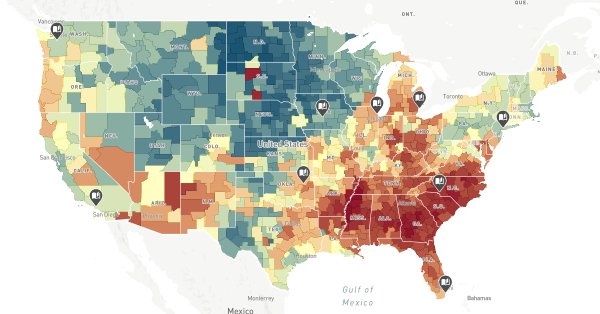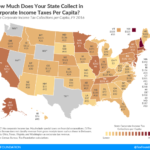Many Michigan kids who grew up poor remain trapped in poverty as adults, with the majority earning approximately $30,000 or less, according to new research released today that provides more detailed economic information than ever on nearly every neighborhood in America.
The vast expanse of northern Michigan, roughly north of the M-10 highway, lacks any upward mobility – up and out of poverty – for the rural poor.
Based on highly detailed data from the Census Bureau, analyzed by researchers at Harvard and Brown universities, the numbers indicate that some metropolitan and suburban areas across the state offer a way out. Yet, Detroit, Flint and Pontiac continue to suffer from extreme poverty among thirtysomething adults, with many earning just $16,000 to $18,000 a year.
Still, Michigan’s generational poverty in rural areas indicates a bit more in common with the Deep South and Appalachia than the sparsely populated areas of Middle America, particularly the Plains States. There may be lessons to be learned there.
The New York Times converted the trove of information into an extraordinary interactive map that allows viewers to zoom in and click on data for their neighborhood, or to explore the nation overall. Those who benefited most from upward mobility are displayed in teal and blue; those who saw little or no improvement in their economic status are in orange or red. The middle ground is colored in pale yellow.
The research, which tracks the fortunes of Americans born between 1978 and 1983, found dramatic divides in income levels, even among neighborhoods lying side by side. For the first time, researchers were able to dig deep to unearth granular information about each Census tract, which is a geographic area often smaller than a few square miles.
In Michigan, the results show, for example, that a portion of Charlevoix County has left adults born into poverty with an average income of $21,000 while those who grew up poor in a section of the nearby Traverse City area earn $45,000.
In the Detroit suburbs, Oakland County is plagued by similar disparities. A section of mostly upscale Novi has adults who experienced poverty as kids now making just $26,000 annually, while in an adjoining area of Wixom the figure for the same demographic group is $50,000.
It appears that the myriad of surprises within the numbers include the realization that many major cities, from New York to Los Angeles, faired rather poorly in upward economic mobility while the Plains States – the Dakotas, Iowa, Nebraska, plus most of Wyoming and Minnesota – notched $40,000-or-more income levels among the formerly poor.
Michigan produced a much different rural result, with the curious exception of the Thumb Area, where those born between ’78 and ’83 – now ages 35 to 40 – had nearly advanced to middle class status.
In reporting on these new revelations, the Times concluded:
The research has shown that where children live matters deeply in whether they prosper as adults. (The data) … will make it possible to pinpoint — down to the census tract, a level relevant to individual families — where children of all backgrounds have the best shot at getting ahead.
… Nationwide, the variation is striking. Children raised in poor families in some neighborhoods of Memphis went on to make just $16,000 a year in their adult households; children from families of similar means living in parts of the Minneapolis suburbs ended up making four times as much.
The results do not necessarily reflect any recent changes in policies at the federal, state or local level. But they do offer up many ingrained mysteries for local officials to ponder as parallel neighborhoods produce dramatically different results.
Some factors include single-parent families, ineffective schools, inadequate housing, and those residents more likely to be incarcerated and less likely to be employed.
The Times reported that the research is based on current adult earnings of 20.5 million people, based on tax data. That data covers nearly all children in America born between 1978 and 1983 and the study focuses on those who grew up in households earning $27,000 or less.
The information offers a never-before time-lapse view of what happened to them: who became a teenage mother, who went to prison, who wound up in the middle class, and who remained trapped in poverty for another generation.










